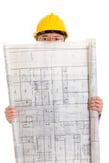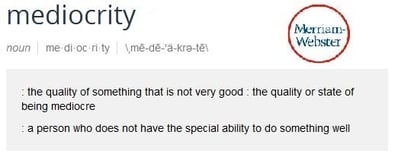Remodelers: Can You Answer These Questions About How You Do Business?

One way I help my clients remodel how they do business is to first get them to actually document how they already do business. For most they think they know how they do business until I start asking clarifying questions as they attempt to explain. I did this exercise one time with a $3M+ remodeler and his management staff. The owner told me before we started how impressed I would be with how they do things and work as a team. About 30 or so minutes into the meeting he came to realize only he knew how to explain it and none of his staff were on the same page as he. He then, in a frustrated tone, asked his staff: “How does anyone around here get things done if none of you can explain how we do business?”
One employee quickly jumped in and said something like: “Well we have to ask you every time and it seems you have a different answer each time so we stopped assuming and decided to just ask every time rather than risk being wrong”.
 Below is a list of considerations regarding how you can do business as a remodeler. The list starts with an initial inquiry from a prospect and is broken out by typical steps of the process up through wrapping up a remodeling project. There are lots of things to consider related to each step depending on the type of work you do, who your target customer is and how you do or will decide to do business. Keep in mind your decisions in each step can or will affect other steps. Please assume it to be a partial list. I hope you find the list to be a helpful way for you to get started thinking through how you do business.
Below is a list of considerations regarding how you can do business as a remodeler. The list starts with an initial inquiry from a prospect and is broken out by typical steps of the process up through wrapping up a remodeling project. There are lots of things to consider related to each step depending on the type of work you do, who your target customer is and how you do or will decide to do business. Keep in mind your decisions in each step can or will affect other steps. Please assume it to be a partial list. I hope you find the list to be a helpful way for you to get started thinking through how you do business.
Steps related to selling and completing remodeling projects:
- Original contact:
- How will prospects contact your business and then how will your business respond.
- You will need ways to respond to inquiries from email, Voice Mail, showroom/office drop-ins and or your web site’s contact page.
- One goal of this step should be to manage prospects’ expectations about what will happen next and when.
- Initial phone conversation
- Who will call the prospect back and when?
- Should it be a trained gate keeper or the salesperson?
- What are the purposes of the initial call: for the prospect and for the business?
- How will the business decide whether to agree to a first sales call?
- Will your business establish and agree to an agenda and purpose for the meeting before you commit, or will you figure that out when you get to the prospect’s home?
- First sales call
- Will this be at your place of business or the prospects home?
- Who has to be there besides your business and how will that be decided?
- How long will the first visit take and why?
- Decision time:
 What does the business need to know about the prospect and their project?
What does the business need to know about the prospect and their project?- Will you have them make a decision about whether your company is a good fit before or after you commit to and invest hours of your time developing an estimate and or proposal?
- Will you require them to share their decision making process about the project and price before you attempt to get them to make a decision, or will you deal with all that at the same time you are expecting them to make a decision?
- Deciding if the prospect and project are qualified and if so for which service the company offers
- If they are not qualified how will you let them know?
- If they are qualified what will you offer them?
- Before you commit to prepare a proposal will you require them to commit to a presentation meeting or are you willing to hit send and wait to see what happens?
- Design/Preconstruction agreement with a fee or free estimating and proposal generation
- Will you charge them to create plans and specs, create them for free, or expect them to already have plans and specs?
- If you will offer design how will your process work, when does it begin and end, and what does it include?
- How much will you charge and when will you collect the money: in full before you start, hourly as you go, after you already did all the work, other…?
- If you create plans and specs who owns them?
- Will you leave them behind if they do not buy from you?
- Proposal presentation meeting
- Who has to be there and if not there will you automatically reschedule and take your package with you?
- Are you expecting a decision at the meeting? If so, what should/will your business do to help them make a decision?
- If not expecting a decision at the meeting how long is your proposal and price good for?
- If you charged to prepare the information will it be applied to the project price or is it considered a separate fee and service?
- Pre-construction and pre-staging
 Will you expect all product selections be made before offering a fixed price?
Will you expect all product selections be made before offering a fixed price?- Will you schedule the job if there are any open selections to be made?
- Will you get enough money at deposit to pre-stage the job with required materials, will you use your own money to pre-stage, or will you wait until you start the job to gather the materials?
- Will you require clients attend and participate at a preconstruction meeting?
- Construction
- What type of payment schedule will you use: % complete, milestone based, time based?
- Will you finance the job for the client by billing after you complete a milestone or will they need to pay you in advance for each milestone so your company always has positive cash flow?
- Will you use a production manager driven system to get the work done or a lead carpenter driven system?
- Will you follow OSHA and RRP regulations?
- Project wrap-up
- Is the final payment due on completion or substantial completion (do you know the difference?)
- Will you allow a punchlist or require a precompletion list?
- Do you have a process and supporting form you and your customers can use to both agree and confirm the project is complete?
- Warranty
 When does the job end and the warranty begin? (What does your contract say about this now?)
When does the job end and the warranty begin? (What does your contract say about this now?)- Have you clarified warranty responsibilities depending on who provides the materials?
- Will making the final payment be a condition of doing any warranty work?


 The layout of your workplace is extremely important, because the wrong layout can restrict staff and hinder productivity, while the right layout can help your team to carry out their tasks more effectively and boost productivity and even creativity. For this reason, it is important that you plan your layout carefully and make the right choices.
The layout of your workplace is extremely important, because the wrong layout can restrict staff and hinder productivity, while the right layout can help your team to carry out their tasks more effectively and boost productivity and even creativity. For this reason, it is important that you plan your layout carefully and make the right choices.

 Guest blogger: Reno Macri is a founder and director of a leading exhibition and event company Enigma Visual Solutions, specializing in retail designs, interiors, graphic productions, signage systems, event branding, modular exhibition stands design, office space planning and much more. He specializes in experiential marketing and event productions. He enjoys sharing his thoughts on upcoming marketing ideas and design trends. Feel free to follow him on twitter.
Guest blogger: Reno Macri is a founder and director of a leading exhibition and event company Enigma Visual Solutions, specializing in retail designs, interiors, graphic productions, signage systems, event branding, modular exhibition stands design, office space planning and much more. He specializes in experiential marketing and event productions. He enjoys sharing his thoughts on upcoming marketing ideas and design trends. Feel free to follow him on twitter. Contractors tend to have a practical approach to their work, and in a competitive market with many moving pieces and complicated projects, investing in the latest technology can help good contractors do their work better. In fact, 75 percent of small to mid-sized construction firms in North America have used a mobile device for work. Like any good tool, using mobile technology can make construction more efficient, accurate and cost-effective. Here’s how:
Contractors tend to have a practical approach to their work, and in a competitive market with many moving pieces and complicated projects, investing in the latest technology can help good contractors do their work better. In fact, 75 percent of small to mid-sized construction firms in North America have used a mobile device for work. Like any good tool, using mobile technology can make construction more efficient, accurate and cost-effective. Here’s how: 3. Tracking Equipment
3. Tracking Equipment Streamline processes with mobile apps and automatic notifications. Virtually eliminate data entry with mobile time clocks and job write ups. Use BIM software or a simple photo sharing strategy to ensure that your work is approved by the client at all times. This improved communication process will result in less reworks, which saves both time and money. That way you can save the company’s bottom line for the really important stuff: getting the job done right.
Streamline processes with mobile apps and automatic notifications. Virtually eliminate data entry with mobile time clocks and job write ups. Use BIM software or a simple photo sharing strategy to ensure that your work is approved by the client at all times. This improved communication process will result in less reworks, which saves both time and money. That way you can save the company’s bottom line for the really important stuff: getting the job done right.
 Yes, becoming a real Design/Builder will be an evolution of change, if you are willing and able to commit to making the changes. The changes will not be easy and will require getting out of your current comfort zone to gain new experiences and results.
Yes, becoming a real Design/Builder will be an evolution of change, if you are willing and able to commit to making the changes. The changes will not be easy and will require getting out of your current comfort zone to gain new experiences and results. Trust is earned. If you do Design/Build well with some clients they will come to trust you and will then let those they refer you to know you and your process can be trusted.
Trust is earned. If you do Design/Build well with some clients they will come to trust you and will then let those they refer you to know you and your process can be trusted.
 The bidding process is a big part of landing clients, and bid invitation apps like SmartBidNet are designed to make it easier for you to win projects. SmartBidNet provides a communications dashboard, where you can send, receive and monitor your invitations to bid. The app includes templates to help you:
The bidding process is a big part of landing clients, and bid invitation apps like SmartBidNet are designed to make it easier for you to win projects. SmartBidNet provides a communications dashboard, where you can send, receive and monitor your invitations to bid. The app includes templates to help you: Safety comes first on any project. From a technology standpoint, the Safety Meeting app makes it easier for contractors to comply with OSHA safety meeting regulations. Safety Meeting allows you to:
Safety comes first on any project. From a technology standpoint, the Safety Meeting app makes it easier for contractors to comply with OSHA safety meeting regulations. Safety Meeting allows you to: Bookkeeping is a necessary chore for any contractor, and accounting apps like QuickBooks Online take much of the labor out of bookkeeping by letting you automate the most repetitive and tedious bookkeeping tasks. Use your mobile device and let QuickBooks Online:
Bookkeeping is a necessary chore for any contractor, and accounting apps like QuickBooks Online take much of the labor out of bookkeeping by letting you automate the most repetitive and tedious bookkeeping tasks. Use your mobile device and let QuickBooks Online: Many contractors are using what are refer to as 1099 workers to avoid employee and payroll related administrative responsibilities and financial costs. Some use this tactic to reduce their costs to help win bids and or make more money. If you never get caught you may feel or believe it was worth it. On the other hand if you get caught, whether you knew what you were doing was illegal or you really believed what you were doing was OK, the financial and litigation related costs can kill your business. The chance of this happening has dramatically increased in certain areas of the country because Washington is offering money to states to help them do so. Read on to find out about what is already happening in Virginia.
Many contractors are using what are refer to as 1099 workers to avoid employee and payroll related administrative responsibilities and financial costs. Some use this tactic to reduce their costs to help win bids and or make more money. If you never get caught you may feel or believe it was worth it. On the other hand if you get caught, whether you knew what you were doing was illegal or you really believed what you were doing was OK, the financial and litigation related costs can kill your business. The chance of this happening has dramatically increased in certain areas of the country because Washington is offering money to states to help them do so. Read on to find out about what is already happening in Virginia. That means you have to pay up on any fines, at their full rate (anywhere from $7K to 70K per violation) right away. Then you have to decide if you are willing to wait for your legal case to make it through a legal system sponsored by the same entity that is accusing your business.
That means you have to pay up on any fines, at their full rate (anywhere from $7K to 70K per violation) right away. Then you have to decide if you are willing to wait for your legal case to make it through a legal system sponsored by the same entity that is accusing your business.
 Most contractors can't explain how they do business, they just make things happen. In a smaller remodeling business, say up to about $5-700K of installed work, this may get you by. But as you grow your business, particularly if you want to
Most contractors can't explain how they do business, they just make things happen. In a smaller remodeling business, say up to about $5-700K of installed work, this may get you by. But as you grow your business, particularly if you want to  Be careful here. If you don't explain how you do business before winning the bid on an architect driven remodeling project you might just be told how you will do business. Examples include how and when you will be paid, what will be considered a change order vs. what you should have assumed to be included, what margin you can earn on change orders, and what hoops you will need to jump through before receiving progress payments and final payments. Be sure to carefully read any AIA Contracts before signing them.
Be careful here. If you don't explain how you do business before winning the bid on an architect driven remodeling project you might just be told how you will do business. Examples include how and when you will be paid, what will be considered a change order vs. what you should have assumed to be included, what margin you can earn on change orders, and what hoops you will need to jump through before receiving progress payments and final payments. Be sure to carefully read any AIA Contracts before signing them. If you are still running free estimates and playing a numbers game of leads to appointments to sales then I have something valuable to share. In the past I believed that if I did not actively pursue new clients, and provide free estimates, I would have no income. It was a numbers game; 5 leads - 3 appointments -1 sale. Sound familiar? In this article I share my lesson in letting go; finding the faith to trust a system to qualify prospects, and the positive impact it can make for your business as well as your cash flow.
If you are still running free estimates and playing a numbers game of leads to appointments to sales then I have something valuable to share. In the past I believed that if I did not actively pursue new clients, and provide free estimates, I would have no income. It was a numbers game; 5 leads - 3 appointments -1 sale. Sound familiar? In this article I share my lesson in letting go; finding the faith to trust a system to qualify prospects, and the positive impact it can make for your business as well as your cash flow. As a result of that temporary relationship I learned how to create a trained support staff at my own business and secured steady work for my team. By learning how to use and sell paid consultations our leads turned into project development retainers which then turned into profitable construction contracts. That temporary relationship was also a big success for the partnering firm; they had a record earning year and made a lot of money.
As a result of that temporary relationship I learned how to create a trained support staff at my own business and secured steady work for my team. By learning how to use and sell paid consultations our leads turned into project development retainers which then turned into profitable construction contracts. That temporary relationship was also a big success for the partnering firm; they had a record earning year and made a lot of money. I no longer run around from appointment to appointment. I now have the time to focus on creating more ways to provide paying prospects with value early in the process. Our business is running with more consistency and cash flow has increased. For every consultation I go on now we have a 70% close rate to a full construction contract, a 20% conversion to a design/material contract and about 10% of our prospects don’t move forward.
I no longer run around from appointment to appointment. I now have the time to focus on creating more ways to provide paying prospects with value early in the process. Our business is running with more consistency and cash flow has increased. For every consultation I go on now we have a 70% close rate to a full construction contract, a 20% conversion to a design/material contract and about 10% of our prospects don’t move forward.  Guest Blogger: Cynthia Murphy, CKBR, is a Certified Kitchen and Bath Remodeler and co-owner of
Guest Blogger: Cynthia Murphy, CKBR, is a Certified Kitchen and Bath Remodeler and co-owner of  As you grow your business day to day management and leadership considerations can quickly creep up on construction business owners. Profitably growing a remodeling business to any volume, but in particular growing past the $1M threshold in produced work, definitely requires advanced business skills. Growing and running your business by the seat of your pants is a sure way to create a mediocre business that will never generate maximum profits. This article offers several ways business owners can determine if they and their businesses are headed for mediocrity. It also offers options to help you and your business get back on track.
As you grow your business day to day management and leadership considerations can quickly creep up on construction business owners. Profitably growing a remodeling business to any volume, but in particular growing past the $1M threshold in produced work, definitely requires advanced business skills. Growing and running your business by the seat of your pants is a sure way to create a mediocre business that will never generate maximum profits. This article offers several ways business owners can determine if they and their businesses are headed for mediocrity. It also offers options to help you and your business get back on track.
 The first is to let them keep happening. If you allow things to continue you will likely lose customers, compromise your brand, have high employee turnover and you will never fully achieve creating a successful and profitable business. Eventually, when your family and others ask you why you never really succeeded in business, you will again have to resort to rationalizing why it was someone else's fault.
The first is to let them keep happening. If you allow things to continue you will likely lose customers, compromise your brand, have high employee turnover and you will never fully achieve creating a successful and profitable business. Eventually, when your family and others ask you why you never really succeeded in business, you will again have to resort to rationalizing why it was someone else's fault.
 This investor buyer will need a leader/manager to run the company. Before offering your business for sale to this buyer type I suggest you transfer the leadership and the day to day management of your business to a well qualified employee over a period of time. During the evolution you can test and prove his/her effectiveness as a general manager in advance of selling. By taking adequate time to accomplish this important consideration at my business both me and my employees felt good about and respected the new leader, before I fully transitioned out of the day to day.
This investor buyer will need a leader/manager to run the company. Before offering your business for sale to this buyer type I suggest you transfer the leadership and the day to day management of your business to a well qualified employee over a period of time. During the evolution you can test and prove his/her effectiveness as a general manager in advance of selling. By taking adequate time to accomplish this important consideration at my business both me and my employees felt good about and respected the new leader, before I fully transitioned out of the day to day. Having systems and employees in place will be important, but you might want to assume that this buyer will likely change or evolve the systems you have put in place. As a result the employees described above might not like and/or agree with the changes. In particular experienced management employees may not tolerate any loss of the independence they have already earned in performing their day to day roles. If you plan to sell to this type of a buyer, I suggest you assemble employees who desire to follow a leader and will go with the flow.
Having systems and employees in place will be important, but you might want to assume that this buyer will likely change or evolve the systems you have put in place. As a result the employees described above might not like and/or agree with the changes. In particular experienced management employees may not tolerate any loss of the independence they have already earned in performing their day to day roles. If you plan to sell to this type of a buyer, I suggest you assemble employees who desire to follow a leader and will go with the flow. 





